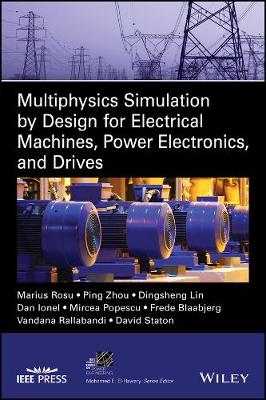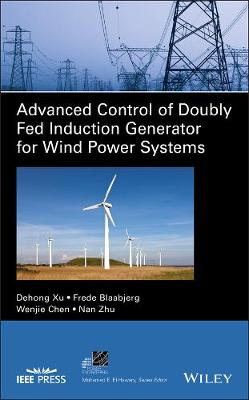IEEE Press Series on Power Engineering
2 total works
Presents applied theory and advanced simulation techniques for electric machines and drives
This book combines the knowledge of experts from both academia and the software industry to present theories of multiphysics simulation by design for electrical machines, power electronics, and drives. The comprehensive design approach described within supports new applications required by technologies sustaining high drive efficiency. The highlighted framework considers the electric machine at the heart of the entire electric drive. The book also emphasizes the simulation by design concept—a concept that frames the entire highlighted design methodology, which is described and illustrated by various advanced simulation technologies.
Multiphysics Simulation by Design for Electrical Machines, Power Electronics and Drives begins with the basics of electrical machine design and manufacturing tolerances. It also discusses fundamental aspects of the state of the art design process and includes examples from industrial practice. It explains FEM-based analysis techniques for electrical machine design—providing details on how it can be employed in ANSYS Maxwell software. In addition, the book covers advanced magnetic material modeling capabilities employed in numerical computation; thermal analysis; automated optimization for electric machines; and power electronics and drive systems. This valuable resource:
- Delivers the multi-physics know-how based on practical electric machine design methodologies
- Provides an extensive overview of electric machine design optimization and its integration with power electronics and drives
- Incorporates case studies from industrial practice and research and development projects
Multiphysics Simulation by Design for Electrical Machines, Power Electronics and Drives is an incredibly helpful book for design engineers, application and system engineers, and technical professionals. It will also benefit graduate engineering students with a strong interest in electric machines and drives.
Advanced Control of Doubly Fed Induction Generator for Wind Power Systems
by Dehong Xu, Frede Blaabjerg, Wenjie Chen, and Nan Zhu
Covers the fundamental concepts and advanced modelling techniques of Doubly Fed Induction Generators accompanied by analyses and simulation results
Filled with illustrations, problems, models, analyses, case studies, selected simulation and experimental results, Advanced Control of Doubly Fed Induction Generator for Wind Power Systems provides the basic concepts for modelling and controlling of Doubly Fed Induction Generator (DFIG) wind power systems and their power converters. It explores both the challenges and concerns of DFIG under a non-ideal grid and introduces the control strategies and effective operations performance options of DFIG under a non-ideal grid.
Other topics of this book include thermal analysis of DFIG wind power converters under grid faults; implications of the DFIG test bench; advanced control of DFIG under harmonic distorted grid voltage, including multiple-loop and resonant control; modeling of DFIG and GSC under unbalanced grid voltage; the LFRT of DFIG, including the recurring faults ride through of DFIG; and more. In addition, this resource:
- Explores the challenges and concerns of Doubly Fed Induction Generators (DFIG) under non-ideal grid
- Discusses basic concepts of DFIG wind power system and vector control schemes of DFIG
- Introduces control strategies under a non-ideal grid
- Includes case studies and simulation and experimental results
Advanced Control of Doubly Fed Induction Generator for Wind Power Systems is an ideal book for graduate students studying renewable energy and power electronics as well as for research and development engineers working with wind power converters.

